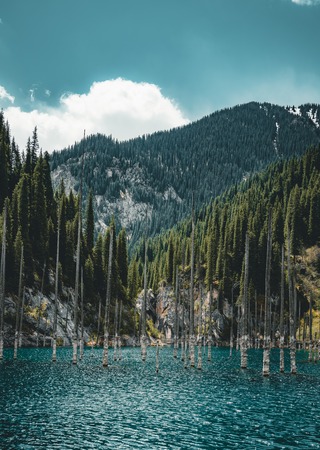Understanding Water Needs on U.S. Trails
When adventuring across Americas diverse landscapes, understanding your hydration needs is the first step to a safe and enjoyable outdoor experience. The United States offers everything from arid deserts in the Southwest to humid forests in the Pacific Northwest and alpine environments in the Rockies. Each of these climates presents unique challenges when it comes to staying hydrated. For example, hot and dry areas like Arizonas Grand Canyon can cause rapid water loss through sweat, while high-altitude hikes in Colorado increase your respiratory rate and dehydration risk even in cooler temperatures. Terrain also plays a crucial role: strenuous climbs, uneven paths, or sandy trails require more effort, which means your body will need more water. Finally, your activity level matters—whether you’re on a casual stroll along the Appalachian Trail or pushing yourself during a multi-day backpacking trip in Yosemite, your water requirements will vary. Being mindful of these factors and planning accordingly helps prevent dehydration and keeps you performing at your best on any American trail.
2. Choosing the Right Hydration System
When it comes to staying hydrated on America’s diverse trails, selecting the right hydration system can make all the difference in your outdoor experience. Whether you’re hiking through the Pacific Northwest, backpacking in the Rockies, or trail running in the Appalachians, the U.S. market offers a variety of options tailored to different activities and personal preferences. The three most popular choices are hydration packs, water bottles, and reservoirs (also called bladders). Each has its own strengths and ideal scenarios for use.
Hydration Packs
Hydration packs are backpacks with built-in water reservoirs and a hose for hands-free drinking. This system is especially favored by trail runners and long-distance hikers because it allows easy access to water without stopping or fumbling with a bottle. They typically hold between 1.5 to 3 liters of water, making them suitable for extended outings where frequent refills aren’t practical.
Water Bottles
Classic water bottles remain a staple for many American hikers and day-trippers. Popular brands like Nalgene and Hydro Flask offer durable designs that fit conveniently in side pockets or can be clipped onto packs. Bottles are easy to clean, refill at streams or stations, and are great for shorter hikes or situations where weight isn’t a major concern.
Reservoirs (Bladders)
Reservoirs, often integrated into backpacks but also available as standalone inserts, provide high-volume storage while keeping the load balanced close to your back. They’re commonly used by backpackers who need to carry large amounts of water over long stretches without reliable refill sources. Reservoirs can be paired with filters or purifiers for added safety when drawing from natural sources.
Comparison Table: Hydration Systems for U.S. Trails
| System | Best For | Capacity | Ease of Use | Main Pros | Main Cons |
|---|---|---|---|---|---|
| Hydration Pack | Trail running, Long hikes | 1.5–3L | Hands-free sipping via hose | Convenient while moving, even weight distribution | Harder to clean, more expensive |
| Bottle | Day hikes, Short trips | 0.5–1L each | Simple—remove cap and drink | Easy to clean, versatile, affordable | Takes up hand/pack space, less capacity per container |
| Reservoir/Bladder | Backpacking, Multi-day trips | 2–4L+ | Squeeze or sip via tube (if pack-integrated) | Larger volume, fits inside pack securely | Difficult to fill/clean on trail, potential for leaks |
Choosing Wisely for Your Adventure
Your choice should reflect your activity type, trip duration, access to water sources, and personal comfort. Trail runners may prioritize lightweight hydration packs; casual hikers might stick with trusty bottles; backpackers tackling remote wilderness will benefit from high-capacity reservoirs. No matter which system you choose, understanding your needs and the unique challenges of U.S. trails ensures safe and enjoyable hydration outdoors.
![]()
3. Safe and Smart Water Sourcing
When hiking or backpacking on U.S. trails, knowing how to safely source water is just as important as having the right bottle or filter. America’s diverse landscapes—ranging from alpine forests to arid deserts—present unique challenges and opportunities for hydration. Learning to identify safe water sources can help you stay healthy and hydrated throughout your adventure.
Recognizing Reliable Water Sources
In the wild, clear, fast-moving streams are generally safer options than stagnant ponds or lakes. When possible, collect water upstream and away from areas of heavy human or animal activity, as these can introduce contaminants. Snowfields and springs often provide cleaner water in mountainous regions, but always be cautious of runoff after storms or during periods of rapid snowmelt, which can carry debris and bacteria.
Regional Water Risks
Mountain Streams: While they may appear pristine, mountain streams can still harbor pathogens like Giardia or Cryptosporidium due to wildlife or upstream campers. Always purify water before drinking.
Desert Springs: In arid regions such as the American Southwest, natural springs may be rare and sometimes contaminated by livestock or mining runoff. Be wary of algae blooms and chemical pollutants.
Eastern Woodlands: Ponds and slow-moving rivers in forested areas are often rich in organic matter, increasing the risk of bacteria and parasites. Surface water should always be treated.
Smart Sourcing Tips
– Prioritize water that is flowing, clear, and as close to the source as possible.
– Avoid collecting water near campsites, trails, or areas with visible animal activity.
– Be aware of local advisories about harmful algal blooms or industrial pollution.
– In dry environments, plan ahead by researching reliable water points along your route.
– Remember: even the cleanest-looking source can contain invisible threats—always use proper purification methods before drinking.
4. Water Purification Methods on the Trail
When hiking or backpacking on U.S. trails, clean water is not just a comfort—it’s a necessity. While America boasts stunning wilderness, many natural water sources can harbor bacteria, protozoa, or even viruses. Choosing the right purification method is key for both safety and convenience. Let’s break down the most popular American-favorite water purification methods: filters, chemical tablets, and UV purifiers.
Filtration Systems
Filters are a staple in the packs of American hikers and thru-hikers alike. These devices physically remove debris, bacteria, and protozoa by passing water through fine membranes.
| Pros | Cons | Usage Tips |
|---|---|---|
| Removes sediment and most pathogens; Fast flow rates; Long-lasting with proper care | Ineffective against viruses; Can clog with silty water; Requires cleaning/maintenance | Pre-filter silty water; Backflush regularly; Store dry to prevent mold growth |
Chemical Purification Tablets or Drops
Chemical treatments—like iodine or chlorine dioxide—are lightweight and take up minimal pack space. They’re a favorite for ultralight backpackers and emergency kits.
| Pros | Cons | Usage Tips |
|---|---|---|
| Effective against bacteria, protozoa, and some viruses; Lightweight and compact; No moving parts to break | Takes 30 minutes to 4 hours to treat; Leaves an aftertaste (especially iodine); Less effective in very cold or murky water | Follow directions for dosage/time; Shake bottle to distribute chemicals; Use neutralizer tabs if available for taste |
UV Purifiers
UV light purifiers use ultraviolet rays to disrupt the DNA of microorganisms. Popular among tech-savvy hikers, these devices are fast and user-friendly.
| Pros | Cons | Usage Tips |
|---|---|---|
| Kills bacteria, protozoa, and viruses in under 2 minutes; No chemicals or taste alteration; Compact and reusable | Requires batteries/electricity; Not effective in cloudy or sediment-laden water; Higher initial cost | Pre-filter turbid water; Carry spare batteries; Swirl device thoroughly for full treatment |
Which Method Is Right for You?
Your choice depends on trail conditions, trip length, group size, and personal preference. Many experienced U.S. hikers carry a primary method plus a backup—like a filter plus tablets—for peace of mind. Remember, safe hydration supports both your health and your enjoyment of America’s wild places!
5. Eco-friendly Hydration Habits
When it comes to enjoying America’s great outdoors, practicing sustainable water habits is just as important as staying hydrated. The U.S. outdoor community actively promotes eco-conscious behaviors, with many hikers, campers, and backpackers embracing the Leave No Trace principles. These guidelines encourage all trail-goers to respect natural ecosystems by minimizing their environmental footprint—especially when it comes to water use and waste.
Leave No Trace and Water Responsibility
The Leave No Trace Center for Outdoor Ethics outlines specific practices for handling water in the wild. When collecting or disposing of water, always do so at least 200 feet away from lakes, rivers, or streams to prevent contamination. Use biodegradable soap sparingly and never wash dishes or yourself directly in natural water sources. By following these steps, you help preserve the purity of America’s waterways for future generations.
Ditching Single-Use Plastics
Single-use plastic bottles are a major concern on U.S. trails, both for their environmental impact and their threat to wildlife. Many American hikers opt for reusable hydration systems such as Nalgene bottles, stainless steel flasks, or hydration bladders. Not only do these alternatives cut down on waste, but they also reflect a growing cultural shift toward sustainability in the outdoor recreation scene.
Supporting Local Initiatives
Across the United States, local parks and trail organizations often provide refill stations and educational signage to encourage responsible hydration habits. Participating in clean-up days or donating to conservation efforts further supports these initiatives and helps protect public lands.
By adopting eco-friendly hydration habits rooted in Leave No Trace principles and reducing single-use plastics, outdoor enthusiasts can enjoy America’s beautiful trails while playing a crucial role in preserving them for others. Every mindful choice contributes to the health of our environment—and ensures that clean, accessible water remains a vital part of every adventure.
6. Essential Gear Recommendations
Top Hydration Bottles for U.S. Trails
When it comes to staying hydrated on America’s diverse trails, durable and reliable water bottles are a must. Nalgene remains a classic favorite, renowned for its virtually indestructible Tritan bottles that are BPA-free and easy to clean. For those who prefer insulated options, Hydro Flask offers stainless steel bottles that keep water cold for hours—ideal for hot desert hikes or summer treks in the Rockies. Klean Kanteen is another American-approved brand, popular for its eco-friendly materials and solid design.
Recommended Hydration Reservoirs & Packs
If you favor hands-free hydration on longer adventures, consider a hydration reservoir system. CamelBak, a Colorado-based pioneer, sets the standard with leak-proof reservoirs and comfortable backpack integration. Osprey, also based in the U.S., provides hydration packs designed specifically for trail use, with easy-access hose systems and ergonomic fits suitable for day hikers or thru-hikers alike.
Trusted Purification Systems for Safe Sipping
Tapping into wild water sources? Safety is key. Sawyer Products, made in the USA, offers lightweight squeeze filters that attach easily to bottles or bags—a top pick on the Appalachian Trail and beyond. KATADYN BeFree combines fast filtration with compact storage, ideal for minimalist hikers. For those venturing into areas with questionable water quality, Steripen uses UV technology to neutralize bacteria and viruses quickly; it’s particularly useful in remote backcountry locations across the States.
Accessories Worth Packing
Don’t overlook practical add-ons: Lifestraw personal filters are convenient emergency tools, while cleaning tablets from brands like Potable Aqua keep your gear fresh between outings. Collapsible silicone cups or soft flasks from brands such as Platypus offer lightweight alternatives for sipping or sharing.
Packing Tips for U.S. Adventures
Selecting American-tested hydration gear means prioritizing durability, ease of use, and adaptability to different climates—whether you’re hiking red rock canyons or alpine forests. Always bring backup purification when exploring remote areas, and consider insulation if trekking in extreme temperatures. With these trusted brands and products, you’ll have peace of mind—and plenty of safe water—wherever the trail takes you.


